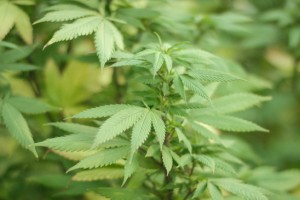Entrepreneurs and investors are quickly seeking to capitalize on what has been coined the “Green Rush” to the cannabis market. Those who finance, develop, produce and sell cannabis or cannabis derivatives should be cognizant of the intellectual property rights that are available in such products, as well as the risks of violating the rights of others. Plant breeders’ rights (PBRs), patents and/or trade secrets may be relevant to the protection of a cannabis product and its method of production.
Branding and other related aspects of cannabis products may be protected through other forms of intellectual property such as trade-marks and industrial designs, which are not discussed in this article.
Plant Breeders’ Rights
The only way to protect exclusivity in a cannabis plant in Canada is to obtain the grant of a PBR for a “plant variety” under the Plant Breeders’ Rights Act (PBRA). To obtain a PBR, an applicant must not only demonstrate that the variety, such as a strain, is “new”, but also that it is clearly distinguishable from all other varieties, stable in its essential characteristics and sufficiently homogenous from one generation of the plant to the next.
In general terms, a variety is considered “new” if the propagating or harvested material of the variety has not previously been sold for a prescribed period that varies, depending on the variety and whether the sale is made within or outside Canada, but is at least one year before the filing of the application.
A PBR only protects the specific variety of cannabis for which it is granted. To date, only a few cannabis varieties have been protected. There are issued PBRs and pending applications for varieties of hemp and a pending application for a variety of marijuana identified as “Big C”.
A holder of a PBR has the right, in Canada, to exclude others from selling, producing, exporting, importing, making repeated use of, conditioning, and stocking the propagating material of the protected plant variety for 20 or 25 years, depending on the type of plant. In the United States, similar protection is offered under the Plant Variety Protection Act for sexually reproduced or tuber-propagated plant varieties, and under the federal Plant Patent Act for plant varieties that reproduce asexually.
Enforcement of a PBR against infringement is subject to several exceptions. A person may use the propagating material of a protected plant variety for private non-commercial purposes, for experimental purposes or to breed a new plant variety. Additionally, “farmers’ privilege” allows a farmer who has legitimately obtained a protected variety to save seeds or other propagating material and replant the variety from one year to the next without infringing the PBR.
Patents
A patent may be obtained in Canada for a new, useful and non-obvious invention. The owner of a patent is granted the exclusive right to make, use, sell, offer for sale or import the patented invention in Canada for 20 years from the date of filing. Like a PBR, a patent enables its owner to exclude others from the market or grant a licence to exploit the rights for consideration.
To be eligible for a patent in Canada, the subject matter must satisfy the definition of “invention” under the Patent Act. To do so, it must qualify as an art, process, machine, manufacture, composition of matter, or an improvement thereon. A patent may be available to protect a novel product containing a cannabis derivative as well as cannabis-related processes and methods, including those related to the extraction of cannabinoids and the production of edibles and concentrates. However, a cannabis plant per se is not patentable in Canada.
Canada has excluded plants and other “higher life forms” from patent eligibility. This differs from the United States, which allows utility patents to be obtained in respect of higher life forms, including various strains of cannabis. Despite cannabis being illegal in most of the United States, there is no prohibition on obtaining a patent for a cannabis plant or a related product, method or process. In fact, the United States Patent and Trademark Office (USPTO) has already issued a patent for a hybrid cannabis plant having certain characteristics that are patently distinguishable from known strains.
Since the United States allows certain cannabis plants to be patented, there is some concern that patents may be issued for strains that have been “available to the public” – albeit through an underground market – for a period that would render them obvious or not novel, and therefore not patentable. In light of the legal restrictions on cannabis in the United States, these strains may not be available for searching by the USPTO in its assessment of an invention. In order to combat this concern and ensure all known varieties are in the public domain, at least one entity has solicited public participation to archive existing cannabis strains.
In Canada, although a patent is not available for “higher life forms”, including plants, a non-naturally occurring and non-multicellular organism is eligible for patent protection. This includes isolated cells, cell lines, cell cultures and isolated genes that have been genetically modified. However, cannabis genes, cells and cell lines derived from traditional breeding methods, such as selection or cross-breeding, are ineligible for patent protection.
Furthermore, since the breeders’ exceptions and farmers’ privilege discussed above would not apply to a patented invention, obtaining a patent would result in a much more robust protection for the patent holder. Thus, using genetic engineering techniques to develop strains of cannabis may provide a significant business advantage over traditional breeding practices.
Trade Secrets
If a new cannabis strain, derivative, method of production or related processing technique is kept confidential, it may be protectable as a trade secret. Protectable information includes any technical or commercial information that is not publicly available and has value because of such confidentiality. It is not necessary to obtain any registration or have a written, or even an oral, agreement to protect a trade secret.
To maintain protection, seeds and other propogating material need to be kept strictly confidential. Trade secret protection would be lost if the composition of the strain or the processing technique could be reverse-engineered or independently developed. Also, absent any contractual provisions to the contrary, anyone who legitimately acquires propogating material of the strain would be free to reproduce the plant.
The greater the efforts made by a person who possesses the information to protect it from disclosure both within and outside its organization, the greater the likelihood that a court will consider the information to be confidential. Information that can be properly acquired elsewhere within the relevant trade or industry, or that is disclosed with authorization by a person in rightful possession, would not be protected.
The receipt of a trade secret in circumstances of confidence imposes a duty on the recipient not to use that information for any purpose other than that for which it was conveyed. Circumstances of confidence exist where the recipient knows, or reasonably ought to know, that the information is confidential. A trade secret may be licensed for use by others.
Best Practices
A business that develops a new cannabis variety, a product that contains a cannabis derivative or a method or process relating to cannabis should, at a very early stage, consider whether PBR, patent or trade secret protection may be available and suitable for any aspect of the plant, its production or any of its derivatives. A business should also consider whether a search of intellectual property rights held by others in those jurisdictions in which it intends to make, use or sell products should be conducted to ensure that any such activities will not violate the rights of others.
credit:420intel.com




